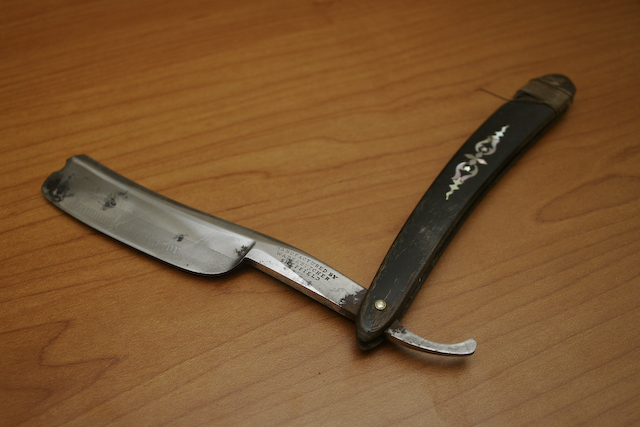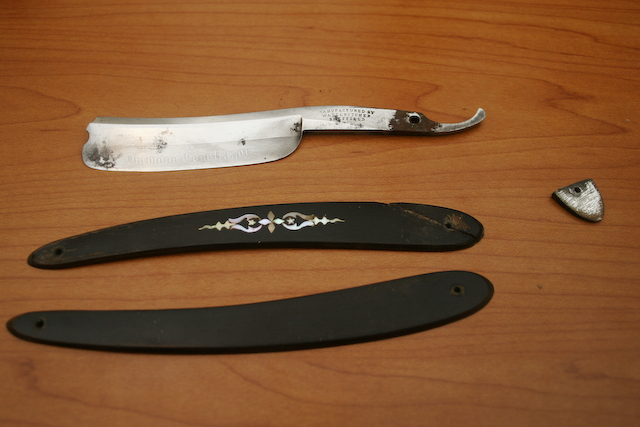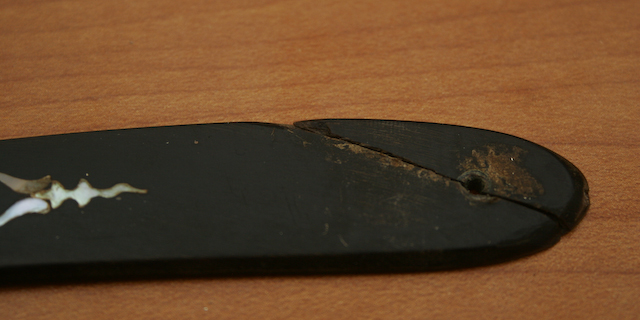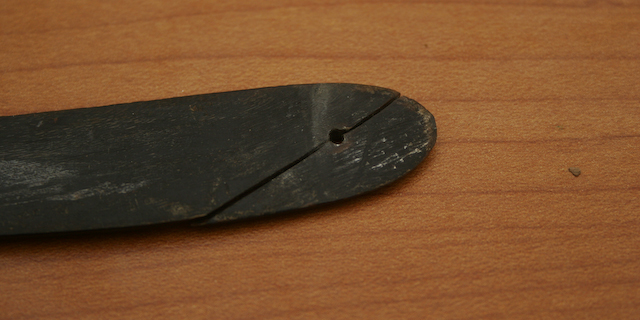Results 1 to 10 of 10
 16Likes
16Likes
Thread: Wade & Butcher Diamond Edge - First Restore Effort
Threaded View
-
12-22-2012, 06:05 AM #1Junior Member

- Join Date
- Nov 2012
- Location
- Victoria, BC, Canada
- Posts
- 10
Thanked: 0 Wade & Butcher Diamond Edge - First Restore Effort
Wade & Butcher Diamond Edge - First Restore Effort
Well, here I go with my first restoration attempt. I picked this Wade & Butcher Diamond Edge up off the bay inside an old paddle strop with a storage drawer.

It's got some pitting, but is in generally good condition. The biggest troubles faced in this restoration appear to be trying to keep the etching, and whether or not I can save the scales. If I can't save the scales, I'd at least like to save the inlay. It's a black horn handle, looks like a steel wedge, and the last 3/8 of an inch are VERY light almost satin finish with "Diamond Edge Razor" clear inside the satin.
The Parts Disassembled:

Scale Damage:
The scales appear that they may have been overtightened at one time, as the split is right through the pin hole. Hard to say what caused it, but now there are small fragments missing. I'm not sure how I would fill the gap, if I were to stick the parts back together. I'm going for a "as near to new" appearance as I can get.


Blade Before:
With the blade fresh out of the scales, I found, significant rust around the pivot, and a lot of black marks. The black marks protruding into the etching on the front side of the blade are going to be a problem. I'm thinking that I'll mask off the writing when it comes to cleaning that up, and try to preserve it that way... I have a few other ideas, but we'll see as I progress.
Well, my impatience got the best of me, and I attacked the blade with my dremel and polishing compound since I couldn't wait for the shop to open in the morning and pick up some sandpaper. I went at it for about an hour for my first effort, being careful not to overheat the blade. Overall, I'm happy with the start this gave me, but upset at myself 'cause I was free-handing it and slipped taking a nick out of the edge near the toe. That'll teach me! Fortunately a honing stone is on my Christmas list, and it wasn't a gigantic nick, though it is larger than I would have liked... For that matter, any nick is larger than I'd like.
Before/After Attacking with a Dremel:




I'll update after I continue hand-sanding and see where I get!



 LinkBack URL
LinkBack URL About LinkBacks
About LinkBacks









 Reply With Quote
Reply With Quote